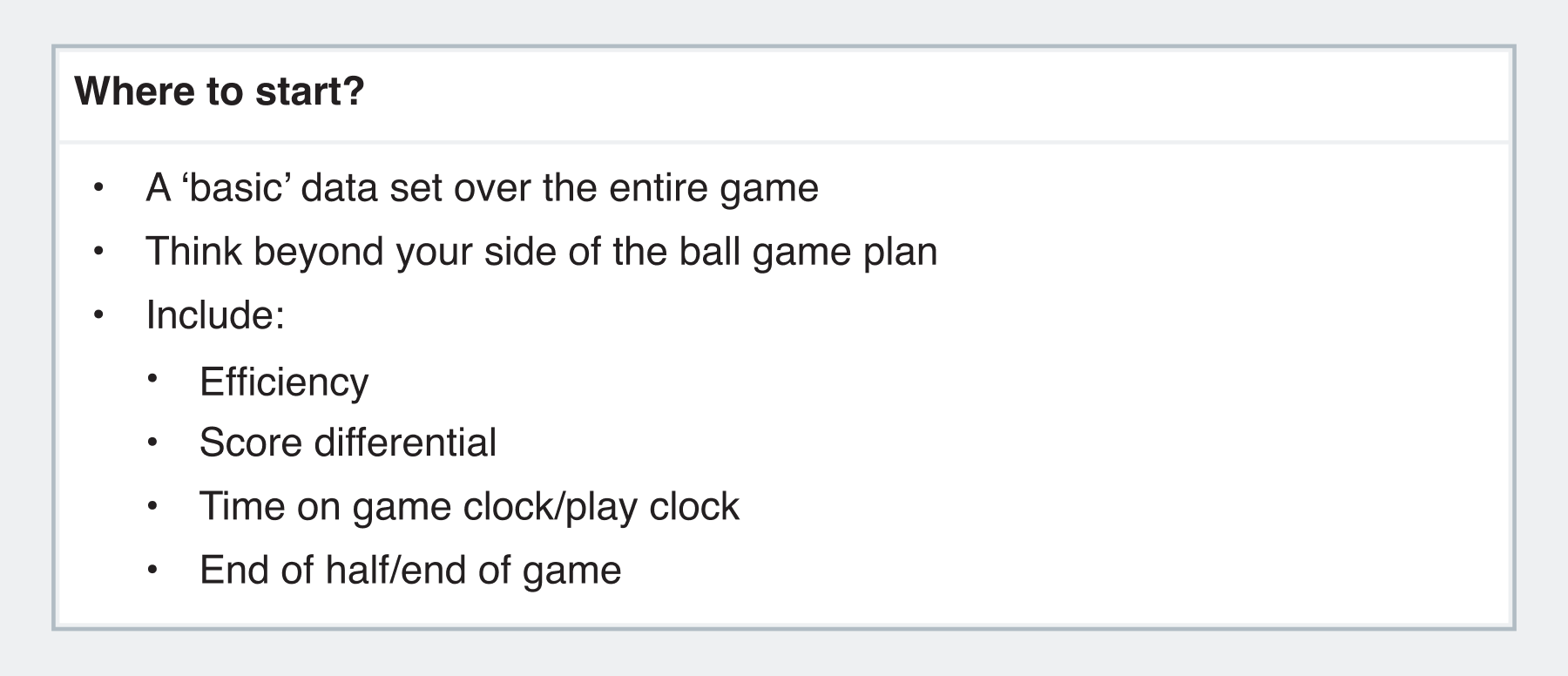Blitz '22: Toppling Goliath: Creating a Plan to Win — Rich Worsell

How do you prepare for an opponent that’s such a heavy favorite on paper? In this season, the University of Akron’s former Director of Research and Analytics takes you through a step-by-step process for planning for — and attacking — strengths and weaknesses.

Want to take this on the go? Download the PDF version of Rich Worsell's guide to gameplanning in Blitz Essentials Vol. 3.

Measuring how many yards a play averages can be misleading. For example, we looked at the Baltimore Ravens two years ago, when they set the NFL season team rushing record. They had a three-back package that they ran 32 times on the season and gained 32 yards on it. So you're kind of thinking, is this package any good?
However, they scored 18 touchdowns in those 32 plays. So now you're thinking, they're using this every third and one, fourth and one, first and goal. What efficiency does is grade whether a play helps you get the yardage you need to help you score.
Putting in score differential is really important. You can see a lot trend-wise going on, and you get a better idea of what people are going to do in the true competitive phase of the game. Put that in every single play, whether it's offense, defense or kicking game.
You can also eliminate plays based on the score differential. Usually what I stick with is three touchdowns in either direction.
I think between score differential and down and distance and time on a game clock, you can really predict what people are going to do. I'll give you an example: If it's the first quarter and it's 15 minutes on the clock after the opening kickoff, then you know every play is available to your opponent. If it's seven seconds left in the game on the 50-yard line, and they're trailing by four, you know it's a pass, so the game clock without realizing it becomes really critical to understanding what your opponents are likely to call.
If you have a camera system that records the scoreboard as well as the play, I'd take advantage of that and be able to put in the game clock in there. If you can get play clock data as well, great. Throw in when the ball is snapped, because you get an idea of pace of play.
End of half, and end of game, are another way to eliminate plays from your basic cutups. Wherever a series of plays is going to skew the data, you want to try and get it out. This includes two minute drills where there’s a high percentage of a pass, or four-minute drill where there’s a high percentage of a run. Eliminate those out. You'll look at them separately in your game plan.
But now what you're starting to do is — without putting in formations or coverages or blitzes, or anything like that — I think you now have the data in your setup to really go in and start pulling out some really interesting cut-ups and start looking at, really, the core of what they're about. And that's what we're trying to get to here. What is your opponent trying to do week to week? How do they adjust? I think doing these things will really give you a good feel for them.






























